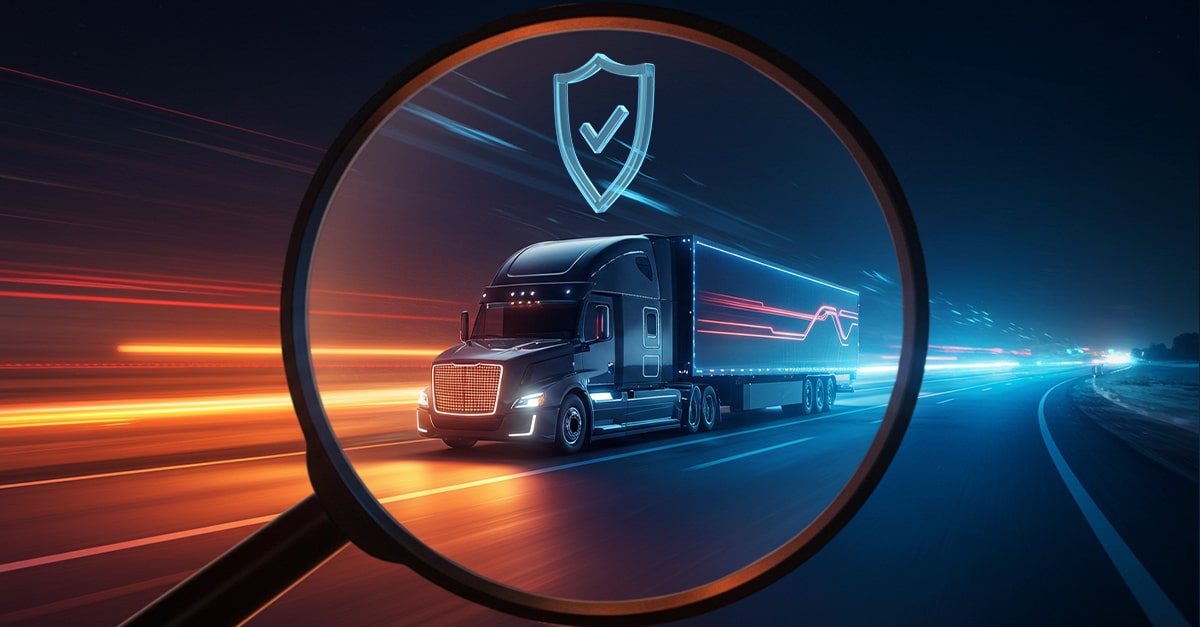To succeed in today’s increasingly competitive market, businesses must focus on customer experience and leverage customer satisfaction as a key differentiator. They must aim to build loyal and long-lasting relationships based on trust, reliability, dependability, and value.
As more products are purchased online and delivered directly to consumers, the entire series of transactions requires a new set of capabilities with unprecedented information exchange between trading partners in order to keep the focus on the customer.
To that end, a fantastic panel on the topic “Supply Chain Visibility for a Connected, Customer-Focused Business” moderated by Logistics Viewpoints’ Chris Cunnane featuring Turvo’s Chief Revenue Officer, Luis Pajares at the Reuters Supply Chain USA Virtual event joined by Russ Felker, CTO of GlobalTranz, Colin Yankee, Executive Vice President & Chief Supply Chain Officer of Tractor Supply Company, Chris Hughes, Managing Director and Practice Leader of Transportation and Logistics at G2 Capital Advisors, and Edward Barriball, partner at McKinsey & Company, was held on Wednesday, October 7th, 2020 at 11:15 AM EST.
The session was a lively discussion by the esteemed panel, covering the following points on best practices and thoughts on how supply chain executives can:
- Leverage real-time global visibility to effectively predict, assess and mitigate risk in their supply chains to deliver the right product at the right time
- Break down silos and standardize data across their network to foster a fully orchestrated system that is agile and can change in real-time to meet evolving customer demands
- Digitally visualize the entire network to identify where executives can more efficiently allocate resources and labor to maximize efficiency and cost savings across your supply chain
The following will summarize the discussion and highlight the major takeaways from the session. Those who registered for the event can watch the session on-demand here using the username and password provided by Reuters.
What does supply chain visibility mean to you, and how does it impact the end customer?
Chris Cunnane kicked-off the session by asking, “What does supply chain visibility mean to you, and how does it impact the end customer?” to the panelists. As anyone in the supply chain knows, asking to define “supply chain visibility” may elicit many different answers, but this group of supply chain focused executives were largely on the same page. Let’s go through some of their answers:
Russ Felker, CTO, GlobalTranz:
“The most interesting part is how does visibility impact the customer, and how does that impact the person that’s really managing that supply chain, creating the shipments, creating the network, encharged with that optimization? The ability to identify risk, the ability to really see and get visibility into, not just the individual moves but how those all interconnect, and how they can work together to create optimization or to impact optimization negatively, I think is a key point for real visibility for the customer and moving it beyond the tactical.”
Chris Hughes, G2 Capital Advisors:
“Allowing supply chain partners and customers to clear away the mountains of information with the advent of all sorts of ERP and TMS systems and other systems, is critical. .To distill that down into a meaningful and digestible portion of information, really the necessary information to be able to make decisions around the business to provide more efficient and productive management of finite resources at the end of the day.”
Luis Pajares, CRO & EVP, Turvo:
“The supply chain is a very fragmented group of people, systems and technology. So we’re talking about visibility on this panel today because we’re trying to find a better understanding of what’s happening throughout that supply chain. And I think we’re craving more or better visibility to address this. But the root cause is that the technology that has served the supply chain hasn’t been able to really connect this fragmented group of people, systems, and technology.
If I were to ask you to define a social network, all of us would say a social network is made up of fragmented people and organizations, and they come together around a shared common interest. You can invite people into this social network. You can be invited into these social networks. But if you think of what the social network does, it’s providing visibility to a shared group of people around those common interests.
So, when I think about visibility in our industry, I think about visibility being a feature. But I think the real root cause that we need to resolve is how do we bring a B2B social network to the supply chain. And this once you can bring about this collaborative logistics, you can improve that visibility amongst all the shippers and carriers, and logistics service providers.”
What are the biggest barriers to end-to-end visibility in the supply chain?
Next, the panel addressed the challenges of implementing end-to-end visibility in the supply chain. Much like the answers to “what does visibility mean to you?” The panelists saw that the challenges focused on that the current supply chain is quite fragmented and technology is often misapplied. According to Colin Yankee of Tractor Supply Chain, “A control tower built on a supply chain digital twin has visibility to each of the nodes in my supply chain and supports automated decision making. I can imagine it, but in reality, it’s really fragmented and functionally based at this point.”
There are really three consistent barriers, according to Yankee:
-
- Visibility is not a solution for a bad process: think about process FIRST before you add any technology and mature operations to a point where technology is an enabler, rather than layering technology on the bad process.
- Gaps in foundational planning systems or execution systems can present barriers to building internal visibility
- Quality, accessibility, and fidelity of data: whether that’s internal with our own supply chain, with our suppliers, our carriers, or how a particular visibility platform is using and projecting that data, that has been a place where we spent a lot of time so that we can trust the visibility and then the analytics that is utilizing that data.
How has COVID-19 impacted investments and the application of visibility tools?
Naturally, the panel had to address the impacts of COVID-19 on visibility and technology investments and how to make end-to-end visibility in the supply chain possible. The discussion on this topic centered on the dramatic swings in volatility. According to Chris Hughes of G2 Capital, “Anytime you have imbalances in supply chain resources of that nature, you have to have better visibility on where stuff is and how you’re going to get it from A to B. Well imbalances, they’re pretty normal occurrences in the supply chain. COVID definitely drove a larger degree of volatility than we’ve historically seen.”
It was clear that there needs to be a focus by supply chain executives to consider more collaborative visibilities.
Does creating a collaborative logistics network drive greater visibility across supply chains? And if so, how?
Naturally, as Turvo is a SaaS-based platform built with collaboration as an inherent feature, Luis Pajares was a perfect panelist to tackle this subject, noting, “if you solve for collaborative logistics, you solve for visibility.” He continued stressing that it’s all about “contextual visibility” to build in more collaboration:
“Different people need visibility to different things in different ways at different times. So contextual visibility is really, really important. But again, as I think about if we can solve for collaborative needs, we solve that for visibility. Collaborative logistics is the game-changer that will bring this fragmented industry together so that visibility is contextual across all the constituents.”
Does a collaborative logistics network then differentiate a customer experience that logistics service providers and shippers can offer to their customers?
Pajares continued in this line of thinking in how collaborative logistics can drive enhanced customer experience, “Better customer experience actually improves revenue which improves profitability.”
Pajares then gave a few real-world examples, starting with Ryder, a partner of Turvo. RyderShare, powered by Turvo, launched Ryder’s initiative to digitize their customer experience and solve for collaborative logistics. The key metrics that they’re measuring and they’re seeing because they’ve solved for collaborative logistics is that their shipper customers are now recognizing revenue five days faster than normal. Where when you bring collaborative logistics to the forefront, they’ve seen their customer satisfaction scores on-time deliveries move from 95 to 99%.
Pajares shared another Turvo partner example, featuring the world’s largest cold storage company, Lineage:
“They just launched Lineage Link and Lineage Link again is tackling collaborative logistics to bring a better customer experience. And that customer experience is driving down their OPEX cost by tens of millions of dollars because trucks and dock workers and shipper loads are all arriving at the right time because that visibility is working for everyone.”
It is very evident that collaborative logistics drive a better customer experience, which is going to drive better revenue and better profitability.
What is the biggest benefit or can you give us an example of how a digital network can drive efficiencies?
The panel ended by talking about the benefits that the digitalization of the supply chain provides in the way of efficiencies.
The panel concluded that digitalization drives better customer experience, which drives more business, more revenue, and profitability. For the non-digital brokers in the industry typically the rule of thumb is you have one employee for every million dollars of freight management. If you’re $100 million non-digital broker LSP, you’ve got about 100 people, when you start digitizing you can now see that same number of people drive $1.3, $1.4 million of freight under management. The digitization brings lots of efficiencies to drive a better customer experience for customers and the partners in the supply chain.”
See the Whole Panel Discussion at Reuters Online to Learn More
From major 3PLs like GlobalTranz to collaborative logistics like Turvo and beyond to supply chain strategists like McKinsey & Company, experts generally agree that visibility is both the problem and solution. See what the full panel had to say by viewing it at Reuters Events online now. And learn more about what Turvo is doing to solve the problems discussed by visiting Turvo online today.








